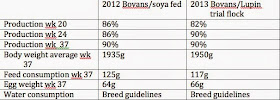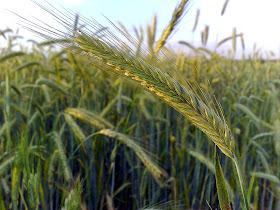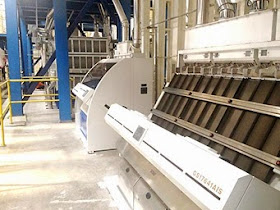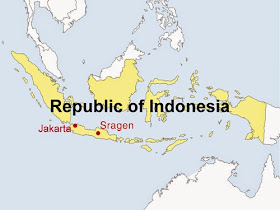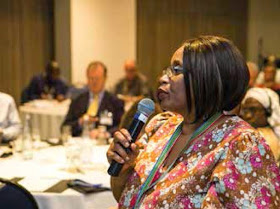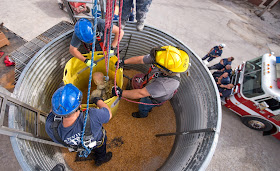First published in Milling and Grain, January 2015
Name 6 Hungarians who made
significant international contributions to their country.
Laszlo Biro; Zsa Zsa Gabor; Abram
Ganz; Ferenc Liszt; Andras Mechwart; Erno Rubik.
Would a contemporary roller flour miller,
or a world grain dealer, have known the names of Abram Ganz and Andras
Mechwart? Perhaps not, because the answers lie in Hungary
I mentioned in my previous contribution to
the magazine that: “I am spending 5 days in Budapest exploring, and
photographing, the surviving roller mill sites and buildings in a city which
was once the centre of European roller flour milling.” That visit was very
successful; I did not meet Ganz or Mechwart because they died, respectively, in
1867 and 1907, but I saw several of the buildings to which they made important
contributions and have subsequently found map and picture evidence of
Budapest’s lead in developing roller flour milling and influencing the United
Kingdom.
The map extract in Figure 1 shows [Jozsef]
Henger Malom, the first steam-powered roller mill in Budapest which first
milled flour on 15 September 1841. Immediately North West is a later Mill owned
by Karoly [Charles] Haggenmacher the Swiss-born miller and inventor; this Mill
illustrates the fact that by the 1890s Budapest was one of the world’s leading
roller flour milling centres.
An artist’s impression of the new Jozsef
mill which I was shown in Budapest may not be accurate but gives an impression
of its size, and confirms that the milling machinery was steam-powered. More
relevant to the above quiz question; is that Abram Ganz, Swiss-born like
Haggenmacher joined the Joszef Mill’s extensive workshops in 1841 so learned
something of the flour milling business in a technologically advanced mill.
By 1844 Ganz had his own foundry in Pesth,
the part of what is now Budapest to the east of the River Danube and began to
manufacture roller mill stands which were advertised, and adopted in the United
Kingdom.
Nineteenth century advertisements, perhaps
partly because there were then many fewer channels of media communication, are
useful sources of additional information for historical research:
- Gustav
Adolf Bucholz was a Prussian engineer who set up an agency in the UK to import
and install European rolling milling machinery
- “Chilled
Iron Rollers” were Ganz’s invention which ensured a true and hard-wearing
surface for the rollers in Ganz Roller Mill frames.
- Andras
Mechwart (from the quiz question) was a German-born engineer who was invited to
Hungary by Ganz in 1859 to work with him and, after the latter’s death in 1867,
Mechwart headed the Ganz factory as Managing Director for 25 years. He was the
co-author of a number of inventions and improvements to the roller flour
milling processes and the reference in the advertisement is to a patented
invention to adjust the nip of the rolls and reduce friction so save power.
- “Smooth”
roller mills were generally for reduction of middlings and semolina to flour.
Ganz also manufactured “fluted” rolls for breaking the wheat berries in the
first stages of the gradual reduction process.
- The
concluding paragraph in the advertisement illustrates the progress of the
roller flour milling revolution where Ganz’s chilled iron roller mills are “. .
. entirely taking the place of Millstones ...”

Although the bullet points above from the
Bucholz & Co advertisement are all relevant and correct, advertisements may
be suspect as historical research sources because they are product-focused and
unlikely to be objective. Other sources, like the Proceedings of professional
institutions, are generally sound and in the 19th century the changes in the
flour industry which I have embraced by the term Roller Flour Milling
Revolution were occasioning learned comment:
“it has been erroneously supposed that, the
Hungarians, had, by some imaginary secret processes, been able to eclipse the
corn-millers of all other nations. It may be well to state here that there are
no such secret processes but that the Hungarians have produced flours still
unsurpassed in excellence by skilful manipulation of their native wheats
(which, though yielding very bad flour when ground by old methods, possess admirable
qualities).
The processes used in Hungary are based on
the principle of dividing the flour produced from the same wheat into 8 or 10
or 12 different qualities. The fine qualities, which command very high prices,
find their market ... in certain parts of the United Kingdom.
Now the English miller must manufacture for
local demand; for, having already incurred the cost of freight, and carriage on
the wheat in bringing it to his mill (wheat which he may have to buy in
competition with his foreign competitor), he cannot afford to pay another
freight on the flour to carry it to a distant place of consumption where he
will meet again the competition of the Hungarian or American miller, who can
send flour direct to the same place and thus incur only one freight on it (and
that freight less than the wheat freight).”
- from: Proceedings of Institute of Civil
Engineers Vol LXX. 16 May 1882 by William Proctor Baker (miller)
So back to my researches in Budapest and
the development of roller flour milling in the city during the mid nineteenth
century:
Like Royal Steam Mill in Figure 3, all
Budapest mills operated on a large scale: they ran on steam, they worked
non-stop, and they conducted business both in domestic and international
markets. Several different economic factors together contributed to the
development and success of this large-scale mill industry:
- Transport
developments: Modernising transportation began with the Danubian steamships in
the 1830s, but the real transformation was brought about by the rise of rail
transportation, which decreased shipping time. Since wheat in Hungary was
harvested earlier than in Western Europe, both Hungarian (wheat) and flour were
able to reach Western European markets before the competition. From the 1850s
intensive urban development began which resulted in the construction of new
roads, wharfs, ports, bridges, rail yards, warehouses, etc. Budapest became the
main transportation hub of the country.
- Crop
trade developments: The cities of Pest and Buda (known as Budapest from 1873)
provided an ideal setting for large-scale mill production, as the city
gradually became the centre of nationwide crop trade, which meant that the
mills had a steady supply of grain at all times.
- Capital
entrepreneurship: from the 1850s onwards, Pest merchants, gained increasing
prominence and began to form a capitalised entrepreneurial circle investing in
various industrial enterprises. Members of this circle became the primary
investors in the mill industry. By the time of the union of Pest and Buda
(1873), Budapest was already the economic capital of the country in every
aspect.
- Technological
innovations: The Budapest steam mill industry developed ... thrived ... and
advanced by the continued development and implementation of important technological
innovations (such as the work of Ganz and Mechwarts and the willingness to
bring in expertise from Switzerland like the inventions and roller mill
improvements of Hans Caspar Escher, Salomon von Wyss, Jakob Sulzenberger and
Adolf Buhler. (More quiz names!)
Edited from: The Global Agricultural Crisis
and the Steam Mill Industry of Budapest in the Nineteenth Century: Influence
and Response Judit Klement (Hungarian Academy of Sciences, Institute of
History) 2014
Miller Baker commented on the number of
grades of Hungarian flour which gradual reduction millers could produce.
We know that imported Hungarian flour was
popular in the UK and, with imported Hungarian hard wheat, represented a
serious economic threat to country mills still
using millstones and trying to produce saleable white flour.
However, Hungary was in turn facing
powerful competition from the United States. Mills in and around Minneapolis
intensively increased their grinding capacity from the 1880s onwards. Key
factors in the Minneapolis boom were new achievements of economic development
characterising the years of peace after the Civil War; crops grown in enormous
swathes of agricultural lands in the west; an efficient rail network which made
the transport of crops from the west and mid-west to the East Coast possible;
and steamboats shipping grains to Europe.
Thanks to US railways and steam boat
companies, American flour producers were able to keep their prices lower than
the Hungarian competition, despite increasing customs duties. Their favourable
pricing also benefited from the fact that production was nearly fully
automatic, which ensured non-stop, large-scale, production and low production
costs. In addition, North American grain was as hard as its Hungarian
counterpart, and was suitable for producing similarly high-quality flour.
Paragraph above edited from: The Global
Agricultural Crisis and the Steam Mill Industry of Budapest in the Nineteenth
Century: Influence and Response Judit Klement (Hungarian Academy of Sciences,
Institute of History) 2014
Helped by my recent research visit to
Budapest I have been able to witness, and to learn more about, the mid-19th
century flour milling industry in the city.
Ferencvaros is the District of Budapest, south
of the centre of the city and on the low-lying east bank of River Danube where
many of the new steam roller flour mills were built. The area was nicknamed
“The stomach of Budapest.” The first large mill in Ferencvaros, Concordia, was
built in 1865 in Soroksari Road which is just in-shore of the railway tracks
and warehouses. As the proximity of the river made it faster to transport the
grain, and flour, many other mills were built in Soroksari Road. The second big
mill, the Mill of Millers and Bakers of Budapest started grinding in 1868. The
Gizella and Kiraly mills were opened in 1880 and the last one, Hungaria was
built in 1893.
As an important complement to the big mills
of Ferencvaros, the largest warehouse in Budapest, the Elevator House was built
in 1883 and was the most prominent shore-side building until it was demolished
in 1948.
 This multi-storey warehouse at Boraros
Square was one of the tallest buildings of the capital. It contained 290 bins
with an overall storage capacity of 36,000 cubic metres. The scoops of the 3
machine-operated paternoster lifts unload 65 tons of grain every hour from the
ships. The grain is weighed by automatic scales then taken by 10 other
paternoster lifts, at the speed of 80-85 tons per hour, then finally, through tubes
it is elevated into the cells.
This multi-storey warehouse at Boraros
Square was one of the tallest buildings of the capital. It contained 290 bins
with an overall storage capacity of 36,000 cubic metres. The scoops of the 3
machine-operated paternoster lifts unload 65 tons of grain every hour from the
ships. The grain is weighed by automatic scales then taken by 10 other
paternoster lifts, at the speed of 80-85 tons per hour, then finally, through tubes
it is elevated into the cells.
From railway wagons, the grain is taken to
the scales, from there to the paternosters, which deliver it through the tubes
to the cells.
The cells are emptied into sacks through
the scales again. The whole operation is run without human power.
Edited from: Budapest Muszaki Vtmutatoja
[The Technical Guide of Budapest] edited by Illes Aladar Edvi Budapest, 1896
The Elevator House was damaged by bombing
in WWII and subsequently demolished in 1948 but the mills in Soroksari Road
remain and, apart from Concordia, have been converted into apartments and
offices. Figure 4 is a poster advertisement for Gizella Malom and Figure 5 is
my photograph of the converted mill taken in 2014.
 Concordia, one of the largest remaining
mills contains Budapest Museum of Milling, now closed to the public but still
containing an internationally significant collection of mill machinery and
records in the care of the Museum of Hungarian Agriculture. I was privileged to
visit the collection in Concordia with Andrea Korosi, Deputy Director of the
Museum and Dr. Tibor Sebok, former Director of the Museum of Milling and from a
milling and mill-engineering family.
Concordia, one of the largest remaining
mills contains Budapest Museum of Milling, now closed to the public but still
containing an internationally significant collection of mill machinery and
records in the care of the Museum of Hungarian Agriculture. I was privileged to
visit the collection in Concordia with Andrea Korosi, Deputy Director of the
Museum and Dr. Tibor Sebok, former Director of the Museum of Milling and from a
milling and mill-engineering family.
Concordia Mill was working between 1866 and
1929 and then became a warehouse. It was rail-connected and was close to River
Danube and the Elevator House.
Today it has a variety of office and
warehouse uses but the structure is deteriorating so there is concern for the
long-term future of the Museum of Milling collections.
There is much more to tell of Budapest’s
roller flour milling history and although it was relatively short-lived we can
learn from Hungarian experiences in researching the Roller Flour Milling
Revolution in the UK.
Since this is an international journal I
would like to conclude by publicly thanking my hosts and guides in Budapest:
- Zsofia
Potsa – General Secretary – Hungarian Grain & Feed Association [see
International Milling Directory]
- Andrea
Korosi (Deputy Director), Laszlo Szabo (Curator, Milling); Gabor Gergely
(Curator, Maps & Papers) – Museum of Hungarian Agriculture
- Tibor
Sebok – former Director, Museum of Milling
- Gabor and Judit Zsigsmund – contacts via BKV Zrt
All were welcoming, very patient and very
helpful; thank you again!
Read the magazine HERE.



